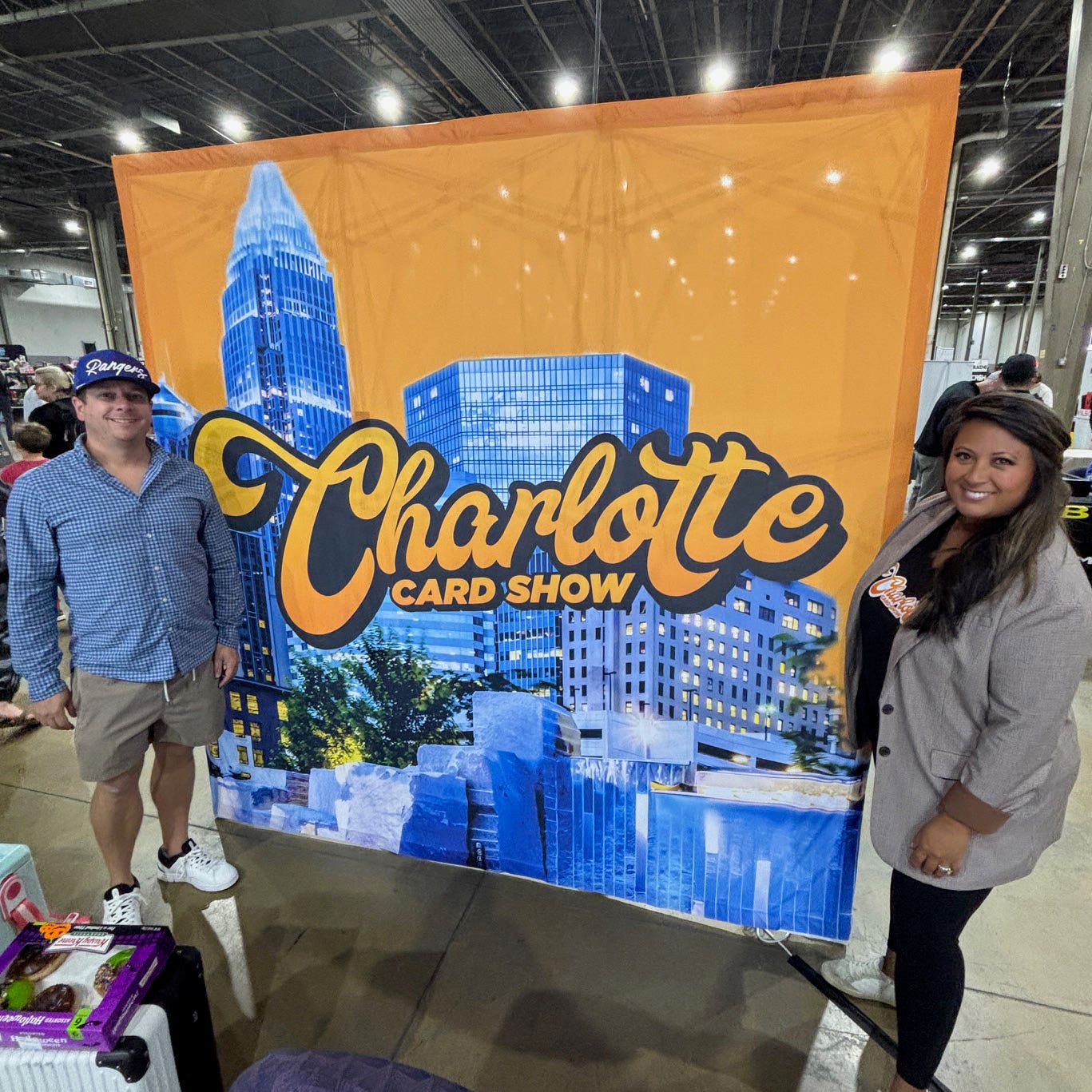Collector Stories
Father of card collecting—a look back
As an admirer of Jefferson R. Burdick (1900-1963) and avid reader of anything written by him, I was surprised to learn that I had missed reading eight articles by Burdick which appeared in Hobbies magazines in 1950.
Burdick’s published works
Burdick is known as the Father of Card Collecting due to his promotion of the hobby by writing, cataloging, collecting and finally donating his 306,000-card collection to the New York Metropolitan Museum of Art. After writing articles for Hobbies between 1935 and 1938, Burdick devoted future writing efforts to his own publication, Card Collector’s Bulletin. Burdick mentioned seven 1930s Hobbies articles in a CCB issue. For some reason, he did not list one of his articles in a July 1937 Hobbies issue. As the result of purchasing a large lot of old Hobbies magazines, I found that “lost” 1937 baseball card-related article and eagerly reported it in SCD over 10 years ago.
Therefore, I thought I had now read and reported on everything published by Burdick. However, alert reader Tim Thornham, who lives in Beaconsfield, England, was more thorough. He contacted me about his discovery of eight 1950 Hobbies articles by Burdick, which he recently reported in his post on the Vintage Non-Sports Card Forum.
Clue from a sentence in a 1950 CCB
Thornham found that in the February 1950 CCB, edited by Burdick’s friend Charles Bray, Bray wrote a short note, buried in with other comments, “Our own Jefferson Burdick has written an ‘Outline of American Cards’ in the January issue of Hobbies magazine. Don’t miss it.”
Like many others, I had indeed missed it, even though I have a copy of that CCB. Thornham wrote, “But, by chance, when looking at early card history research and Card Collector’s Bulletin references, I noted a further article in January 1950. This then led me to uncover a run of eight articles that Burdick wrote for Hobbies, running January 1950 thru' August 1950. I've not seen anyone else write about these articles in 1950.”
It is hard to claim “discovery” of articles published and sent to thousands of readers, but, for whatever reason, these 1950 articles remained under my radar as well. I subsequently found that Dave Jamieson ran across at least one of these articles and referred to it in his 2010 book “Mint Condition.”
Thornham explained, “The 1950 series of articles is Burdick's (now much better informed) view of the whole genre of card collecting. He calls it ‘An Outline of American Cards,’ the title very likely derived from the Eric Gurd publication ‘Cigarette Cards - An Outline’ from 1942.”
Summary of the articles
Burdick’s eight articles hit the high points of card collecting. Burdick loved to organize and catalog. His articles show his penchant for keeping things nice and neat -- describing three major divisions of American card collecting: advertising cards, insert cards and souvenir cards. Every printed card had to fit into one of those categories. Thornham summarizes the articles as follows.
1. Jan. 1950: An Outline of American Cards -- an introduction to three main genres: advertising cards, insert cards and souvenir cards
2. Feb. 1950: The Advertising Group -- an introduction to the early trade or Victorian cards, that generally preceded insert cards
3. March 1950: Tobacco Inserts -- a whistle-stop tour of cigarette and tobacco cards from outset to around 1915
4. April 1950: Insert Types -- non-tobacco insert cards, such as coffee, baking soda, candy and gum cards
5. May 1950: Souvenir Types -- a ramble through non-postcard souvenir cards, such as greeting cards and playing cards
6. June 1950: Post Cards -- a more in-depth view of postcards, a topic on which Burdick wrote two books (Pioneer/early and Detroit Publishing postcards)
7. July 1950: Foreign Cards -- a bonus article, by popular demand, apparently
8. Aug. 1950: Some Questions Answered -- Burdick answers a few readers’ questions
I found the articles consistent with what Burdick wrote in his CCBs or American Card Catalogs. The advertising card group seemed to retain Burdick’s interest.
Even though Burdick wrote eight articles, he didn’t have much space to get into specific sets or to include photos. Sports cards were barely mentioned as in, “Baseball fans, in particular, love those pictures of diamond stars of their youth.” He covered the names of issuers but didn’t get into many details like the tobacco card insert wars. He reminisced, as in his ACCs, about looking at picture cards (at his boyhood home in Central Square, New York) on “long winter evenings before there were…modern diversions.”
Burdick’s article on foreign cards acknowledged the wealth of collectible cards in other countries especially England and Germany. He dodged cataloging European issues by calling his publications American card catalogs.
Responses to letters
Questions and answers can be interesting reading, and Burdick’s final article was amusing. One reader wrote Burdick via Hobbies, as directed, asking how to increase her 5,000-card collection. Burdick replied, “This good lady neglected to enclose a reply stamp (as requested in the articles) and to tell what kind of cards she has.” He tells her to look around, “The catalogs, magazines and some collector’s instinct are the things needed to start.”
Another reader wanted the history and values for his old German playing cards. Burdick politely told him that he didn’t have a clue.
Burdick was asked about the collectability of scrapbooks of old cards. He responded basically that it depended, “but the vast bulk of them average just outside the valueless class.”
“Most requests for names of collectors and dealers must be refused,” Burdick responded. He told them to do their homework and find other collectors, publications or societies.
When asked where to buy albums, Burdick responded, “Here is a crying need that should be met by some enterprising manufacturer.”
He was asked if there was a postcard catalog. He told them not as far as he knew. However, the seed was planted, and Burdick went on to publish postcard catalogs in the 1950s.
Time on his hands?
In the December 1947 CCB, Burdick announced his decision to donate his collection to the Met. He turned over publication of his CCBs to Charles Bray in June 1949. Did Burdick write for Hobbies again because he now had time on his hands? What was Burdick’s connection to Hobbies after the 1930s? Why did Burdick write the articles?
Burdick’s day and night jobs in 1950
Burdick still worked assembling parts during the day at Crouse-Hinds in Syracuse. He wrote in 1947 that he expected it would take him three or four years to ship his collection to the Met. It took him more like 15 years. After the transfer of publishing to Bray, it seemed like Burdick wrote even more articles for CCB in 1950 and the first few years thereafter. He reported on his progress in organizing and shipping cards to the Met, but that proved to be a drop in the bucket versus the work that lay ahead. He seemed busy.
In addition to writing articles for the CCBs, Burdick also placed ads in the CCBs in 1950 amounting to his wantlists. He listed specific sets or cards he hoped to get. Unlike other advertisers, he didn’t include any willing-to-pay price. Based on Burdick thank-you notes in the CCB, several collectors contributed cards to include in the Met donation. Burdick wrote that he wanted to provide a national collection of cards that was as complete as possible to be enjoyed by collectors visiting the Met.
Hobbies connection
After writing for Hobbies in the late 1930s, Burdick would frequently mention in his CCBs something he had read in Hobbies. He stayed in touch with opinionated publisher Otto C. Lightner (1887-1950) and his long-time assistant and editor, Pearl Ann Reeder (1898-1981). Burdick ran ads for his CCB in Hobbies. In October 1946 Burdick went to 2810 S. Michigan in Chicago to try to meet with Lightner. Burdick wrote in CCB, “At Hobbies we missed seeing the publisher but had a pleasant visit with Miss Reeder, the editor, who allowed us to inspect the card room in the (Lightner) museum. This is the room which Mr. Lightner had paneled and decorated with cards of all kinds.”
In 1949 Lightner purchased a 62,000-square-foot, eight-story loft office building at 1006 S. Michigan, Chicago. Hobbies used two of the floors and the balance of the building was rented to others. In failing health in the late 1940s, Lightner moved to Saint Augustine, Fla., where he purchased the former Alcazar Hotel and turned it into a museum to house his collections which included cards. Lightner died on June 9, 1950, and is buried in the courtyard of his museum.
Why the eight 1950 articles?
Burdick may have approached Reeder to run the series of articles to promote the hobby and possibly obtain some additional contacts of people interested in collecting or in adding to the Met donation. His Hobbies articles from the 1930s resulted in several fruitful contacts.
Lightner put together Hobbies in 1931 by acquiring a stamp magazine and then rolling up other hobby publications which had financial difficulties during the Depression. I was able to track down Greg Graham, who inherited Hobbies and the building at 1006 S. Michigan. Graham confirmed a comment from a former writer that columnists were usually paid by giving them free ads in the magazine. One of Burdick’s motives for writing these 1950 articles must have been to continue to get free ads in future Hobbies for his CCB publication.
Perhaps the responses to the Hobbies articles and ads were not what Burdick had in mind, plus they weren’t even sending him the 3-cent return postage! I could assume Burdick never wrote again for Hobbies, but have now learned to never assume.
Lightner, Reeder and Graham
Reeder started working for Lightner in the early 1930s and became the owner of Hobbies and Lightner’s real estate following Lightner’s death. Lightner was unmarried and had no children. According to Greg Graham, Lightner’s sole marriage lasted one day, and then he had it annulled. Reeder never married. When Reeder died in 1981, Reeder’s nephew, Dale Graham, became the editor and building owner. After Dale’s death, Greg took over both the magazine and the building.
Greg Graham started working at Hobbies in 1976 and never left. He never met Lightner or Burdick, but he did work with Reeder. He recalled Reeder as a “hard-working, generous person. She lived practically next door to the office and worked seven days a week until her death. Her desk was covered with papers.” Lightner’s rolltop desk remained untouched in the office for several decades before Graham cleaned it out. Production methods didn’t change much either, Graham said.
Hobbies had a peak circulation of 45,000, according to Graham, and was published monthly until 1985, when the title was changed to Antiques & Collecting Magazine. Graham sold the magazine and its archives around 2008 to a small publisher in Iowa and continued to run the building.
The Lightner building, built in 1906, was owned by Lightner Enterprises (Graham) when sold for $10.5 million in 2015. The prominent site on Michigan Avenue is near new, high-rise residential construction and has an unobstructed Lake Michigan view. Two sides of the building today still bear the weathered, painted “ghost” signs: “Hobbies… The Magazine for Collectors” and “Lightner Publishing Corp.” One side of the building will likely be covered in the future by a planned 74-story tower.
The 1950 Burdick articles can be found on the Vintage Non-Sports Card Forum at https://forum.vintagenonsports.com/post/burdick-and-hobbies-the-magazine-for-collectors-1950-articles-10238075?pid=1309295155#post1309295155
George Vrechek is a freelance contributor to SCD and can be reached at vrechek@ameritech.net.








